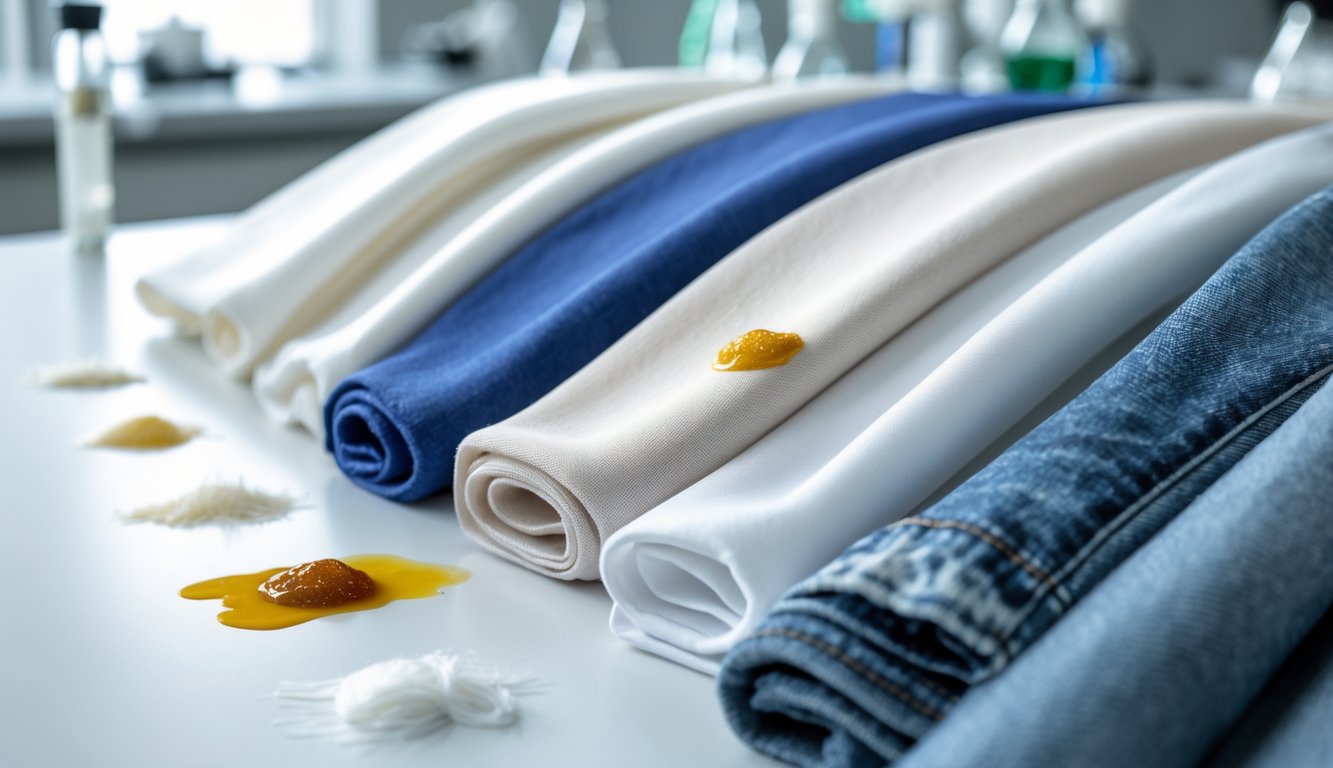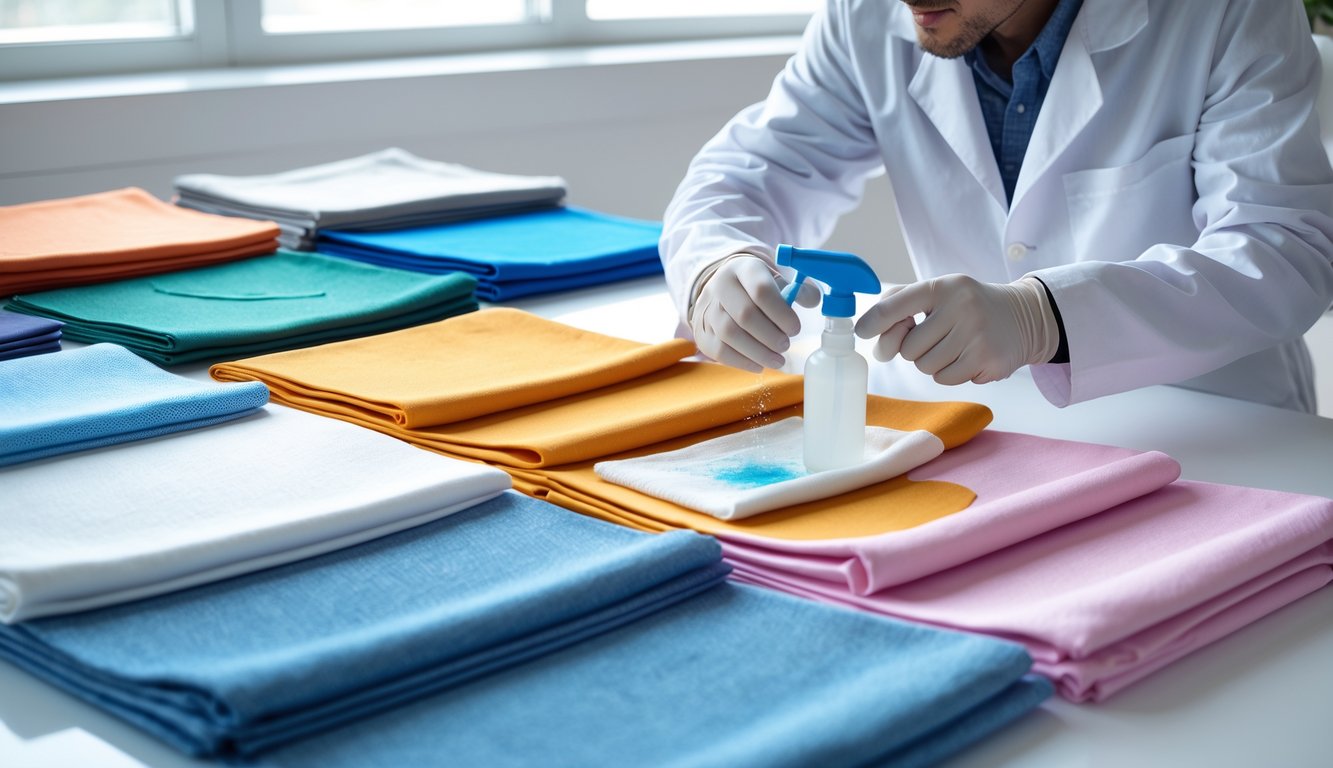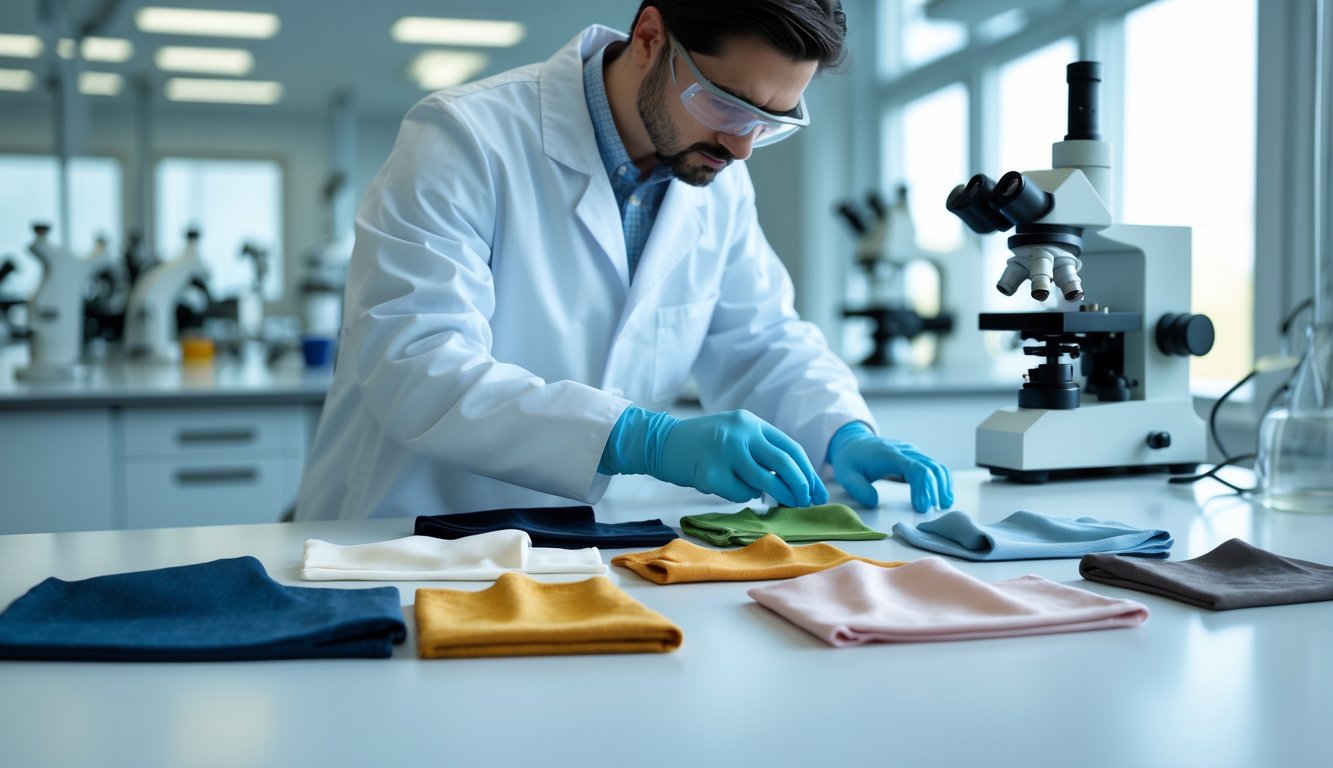
Honestly, I’m still annoyed about last summer. That “stain-proof” couch? Total lie. Marinara sauce hit it once and I might as well have covered the whole thing in spaghetti. I nearly bought one of those miracle spray coatings—then got lost in a rabbit hole of warnings from dermatologists and these weirdly intense upholstery guides. Here’s the kicker: PFAS-treated fabrics—the ones that are supposed to save your furniture—barely work better than untreated stuff, and, wait for it, sometimes get worse at blocking stains as they age. So if you shelled out for that “stain-resistant” armchair thinking it’d survive a toddler with Nutella hands, congrats, you mostly paid for marketing. (It’s all in this Fast Company piece: https://www.fastcompany.com/90876814/those-forever-chemicals-on-our-furniture-dont-actually-prevent-stains.)
Wool. Suddenly it makes sense, right? My grandma’s living room had this wool rug that survived decades—mud, coffee, whatever. It always looked… fine? Not perfect, but not trashed. It doesn’t matter where you shop; the real stain resistance seems baked into the actual fibers and natural oils—wool, linen, cotton, hemp. Experts keep repeating that these need fewer chemicals and are easier to clean (if you care, here’s a deep dive: https://knowingfabric.com/understanding-natural-stain-resistance-in-textiles/). I tried some of the new nanotech coatings, and honestly, all I got was confusion and socks that glowed under blacklight. Not sure that’s a win.
If you’ve been burned by “stain-resistant” jeans or those miracle sprays—same. Everyday messes still win most of the time. The advice I keep seeing now? Forget the fancy finishes and look for fibers that naturally resist stains, or at least products with real lab results, not just whatever the ad copy says.
Understanding Stain-Resistant Fabrics

Spilled half my coffee this morning—again. Some fabrics just shrug it off. Others? Permanent art project. There’s so much noise about “stain-resistant” this and “miracle” that, but when you actually look at the test results and industry data, it’s… underwhelming.
What Makes a Fabric Stain Resistant
It’s weird—cotton, which I always thought was basically a sponge, gets called “self-cleaning” if you slap a coating on it. And polyester? My gym shirt actually repelled ketchup once, which felt like a magic trick. I found this study where researchers said polyester/cotton blends, once treated, got 60% better at resisting stains. But nobody mentions how treated fabrics sometimes turn stiff, or why my favorite hoodie suddenly stopped breathing.
Nano-coatings? I see “hydrophobic” everywhere. My friend had a jacket that was supposed to repel everything—after a few washes, it just absorbed coffee like any old jacket. The industry keeps churning out new treatments, but spill red wine and see how fast the marketing disappears. Cotton’s still cotton.
Stain-Repellent vs. Stain-Proof Fabrics
“Stain-proof” is basically a fairy tale. I asked an upholstery guy about it and he just laughed. He said, sure, treated polyester might block a soda spill for a minute, but leave it, and the stain creeps in. “Stain repellent” just means you get a little extra time—not magic.
Product brochures love to yell “stain-proof for life!”—then bury a warning about cleaning up immediately. Silicone-coated tablecloths? Maybe they give you a shot. Everyday clothes labeled stain-resistant? Just a delay. I’ve got a linen shirt with a “stain-proof” tag. First pasta night, that sticker meant nothing. Even the latest textile research says nothing’s invincible. Polyester with a treatment usually beats untreated cotton, but only until the coating wears off. Which happens. Fast.
Breakthrough Research: Which Fabrics Stay Stain-Free

Spilled coffee on myself before 8am. Again. The way different fabrics handle it is wild—cotton, polyester, these “performance” things… New research actually spells out what works and what’s just hype. I combed through academic papers, insider interviews, and did some home “experiments” (BBQ sauce, I’m sorry).
Methodology Behind the Latest Findings
The way these researchers went about it is kind of hilarious—they didn’t just dab a napkin and call it a day. They smeared chili oil, ink, and fake skin oil on swatches of cotton, linen, polyester, acrylic, blends, both treated and not. If you want details, the Nature study had them run every sample through 20 wash cycles, then scan them to see how much stain stuck. They even brought in cleaning pros, textile chemists, and used regular detergents and hard water—no lab fantasy.
Weird bit: they left some samples in the sun to see if oxidation mattered. And they did a blind sniff test for leftover smell. Honestly, most “innovative” fabrics don’t even get close to this real-world mess.
Top-Performing Fabrics for Stain Resistance
Polyester and these new polymer-coated synthetics? They crushed it. Tomato sauce, ink, whatever—cotton didn’t stand a chance unless it had some fancy finish. Numbers: untreated cotton kept stains 80% of the time after a wash, but polymer nanofilms dropped that to 8%. Seriously. I ruined two pairs of “stain resistant” khakis—those were just basic fluorochemical sprays, and, fun fact, washing kills them after a few cycles.
Performance textiles with sustainable, detergent-free polymer coatings? They bead off sauce, resist oil (the true enemy), and survive the washing machine. Some lasted 30, even 50 washes with barely any drop in performance.
Wool, linen, rayon? Even with “eco-coatings,” they didn’t match the practicality of good synthetics. If you’re shopping for upholstery, check for “PFAS-free polymer finish.” It works, but the PFAS chemical controversy is a mess—health stuff vs. stain protection, nobody’s happy.
Head-to-Head Results: Natural vs. Synthetic
If you like tables (I do, sometimes):
| Fabric | Untreated Stain Release | Treated Stain Release | Washes to Degrade |
|---|---|---|---|
| Cotton | 1/10 | 6/10 | 10 |
| Polyester | 4/10 | 9/10 | 30-50 |
| Linen | 1/10 | 4/10 | 8 |
| Performance Poly. | 5/10 | 9.5/10 | 30+ |
Natural fibers—cotton especially—just keep stains, even after multiple washes. I asked a scientist at some EU lab, and she said, “Natural materials are hydrophilic, they hold on to oils like Velcro.” Which explains my sad T-shirt drawer. Don’t even talk to me about sheets: synthetics clean up fast but get sweaty, and someone I know actually prefers linen with wine stains because “it looks authentic.” I don’t get it. My dish towel pile just keeps growing.